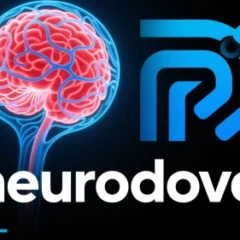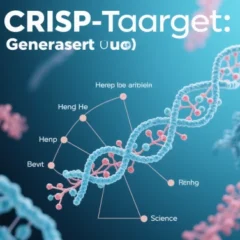CRISPR (Clustered Regularly Interspaced Short Palindromic Repeats) is a revolutionary gene-editing technology derived from a natural bacterial immune system.
Key points:
Uses a guide RNA to direct the Cas9 protein to cut specific DNA sequences.
Allows precise insertion, deletion, or modification of genes.
Applications: curing genetic diseases, improving crops, biomedical research.
Nobel Prize in Chemistry (2020) awarded to Doudna & Charpentier for its discovery.
It’s faster, cheaper, and more accurate than older gene-editing methods.

Biocyclic.com
Core Definition and Multidisciplinary Applications of Biocyclic Systems Biocyclic systems, as an interdisciplinary concept, focus on emulating the material and energy flow patterns of natural ecosystems to achieve sustainability through closed-loop cycles, resource regeneration, and process optimiza…

Biocyclic.com
Challenges and Future Directions of CRISPR Technology Despite CRISPR's revolutionary potential in precision medicine and gene therapy, its large-scale clinical application faces multiple challenges. Below, we outline key technical bottlenecks and future directions, integrating current research progr…

CRISPRSingle.com
CRISPRSingle and Systems-Level Multi-Omics Integration: Building a Closed-Loop System for Functional Genomics 1. Technical Framework and Core Logic CRISPRSingle refers to a technology integrating CRISPR gene editing at the single-cell level with multi-omics analysis. Its core objective is to establi…

Editomics.com
编辑组学:定义、学科范围和未来应用 定义和学科范围 Editomics 是“Edit”和“Omics”的合成词,代表了一个科学领域,专注于通过将基因编辑技术与多组学方法(基因组学、转录组学、蛋白质组学等)相结合来系统分析生物编辑事件。其研究范围包括: 基因组编辑组学:使用 CRISPR、碱基编辑等对基因组进行靶向修饰,以研究系统性的生物学影响。 RNA 编辑组学:研究 RNA 水平编辑事件(例如,ADAR 介导的 A-to-I 编辑)及其在疾病中的作用,例如 EDK 数据库中记录的异常 RNA 编辑-疾病关联。 表观遗传编辑组学:调节表观遗传标记(例如,DNA 甲基化、组蛋白修饰)以改变基因表…

CRISPR-Single
CRISPR + Single-Cell Sequencing: A Deep Dive into Technical Integration 1. Definition and Core Principles CRISPR + Single-Cell Sequencing is an innovative approach that combines CRISPR gene-editing technology with single-cell resolution omics analysis (e.g., single-cell RNA sequencing). Its goal is …

CRISPR-Toolkit
CRISPR-Toolkit: Definition, Core Components, and Applications Definition and Conceptual Scope CRISPR-Toolkit refers to a collection of software, experimental reagents, and standardized protocols developed around CRISPR gene-editing technology. It aims to simplify the complexity of genetic editing wh…

neurodecode.com
1. Terminology and Core Concepts Neurodecode is a compound term with two primary meanings: Neural Decoding (General Concept): The process of extracting information related to external stimuli, behaviors, or cognitive states from neural activity signals (e.g., EEG, fMRI, single-neuron recordings). It…

Haptisense
Etymology and Core Definition Haptisense (or haptic sense) originates from the Greek haptikos ("touchable") and Latin sensus ("perception"), translating to a tactile perception system. It is defined as: A biological system that integrates mechanical stimuli (e.g., pressure, vibration), temperature, …

crisprtarget
1. Definition and Core Mechanisms CRISPR Target refers to the DNA or RNA sequences specifically recognized and cleaved by CRISPR systems (e.g., Cas9, Cas13 nucleases) guided by RNA (gRNA or crRNA). This process underpins CRISPR’s ability to achieve gene editing, antiviral immunity, or diagnostic fun…

ecosynbio
ECOSynBio (Energy and Carbon Optimized Synthesis for the Bioeconomy) is an innovative initiative launched in 2020 by the U.S. Department of Energy’s Advanced Research Projects Agency-Energy (ARPA-E). It aims to redefine biomanufacturing through synthetic biology and bioengineering to achieve efficie…










